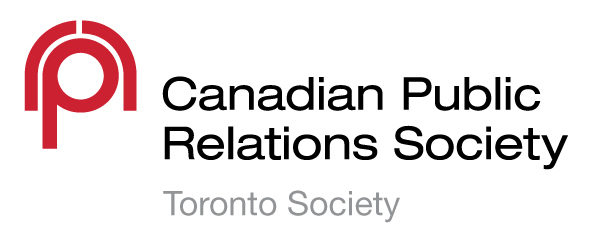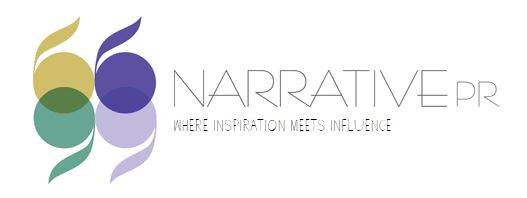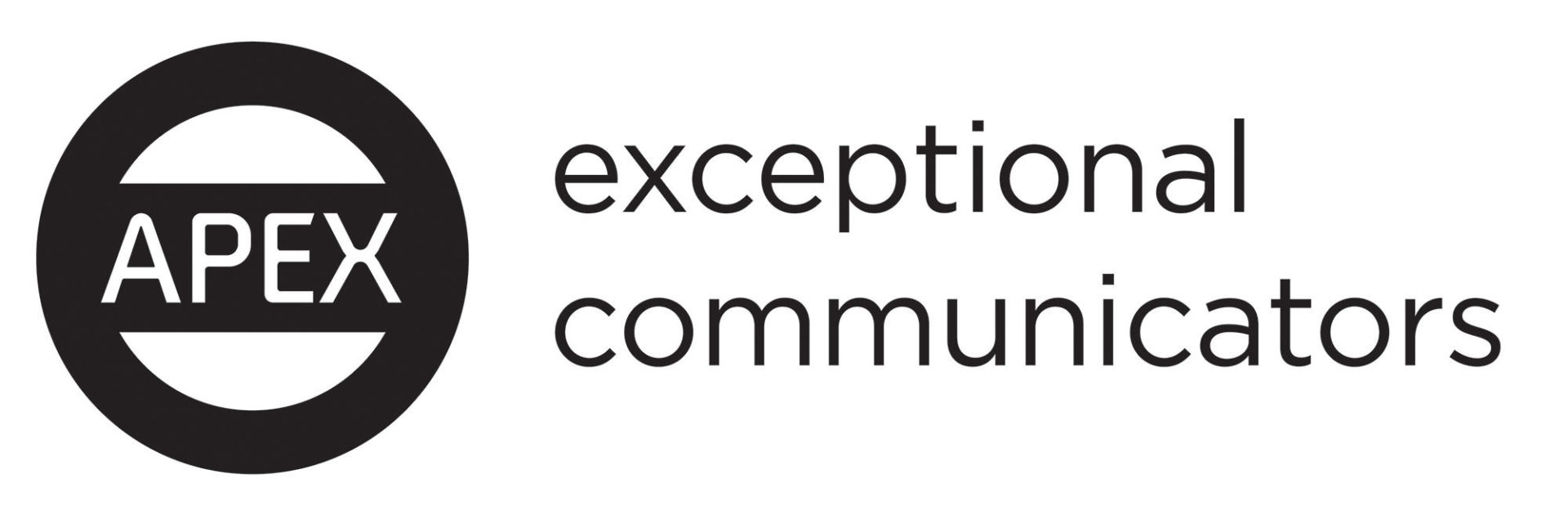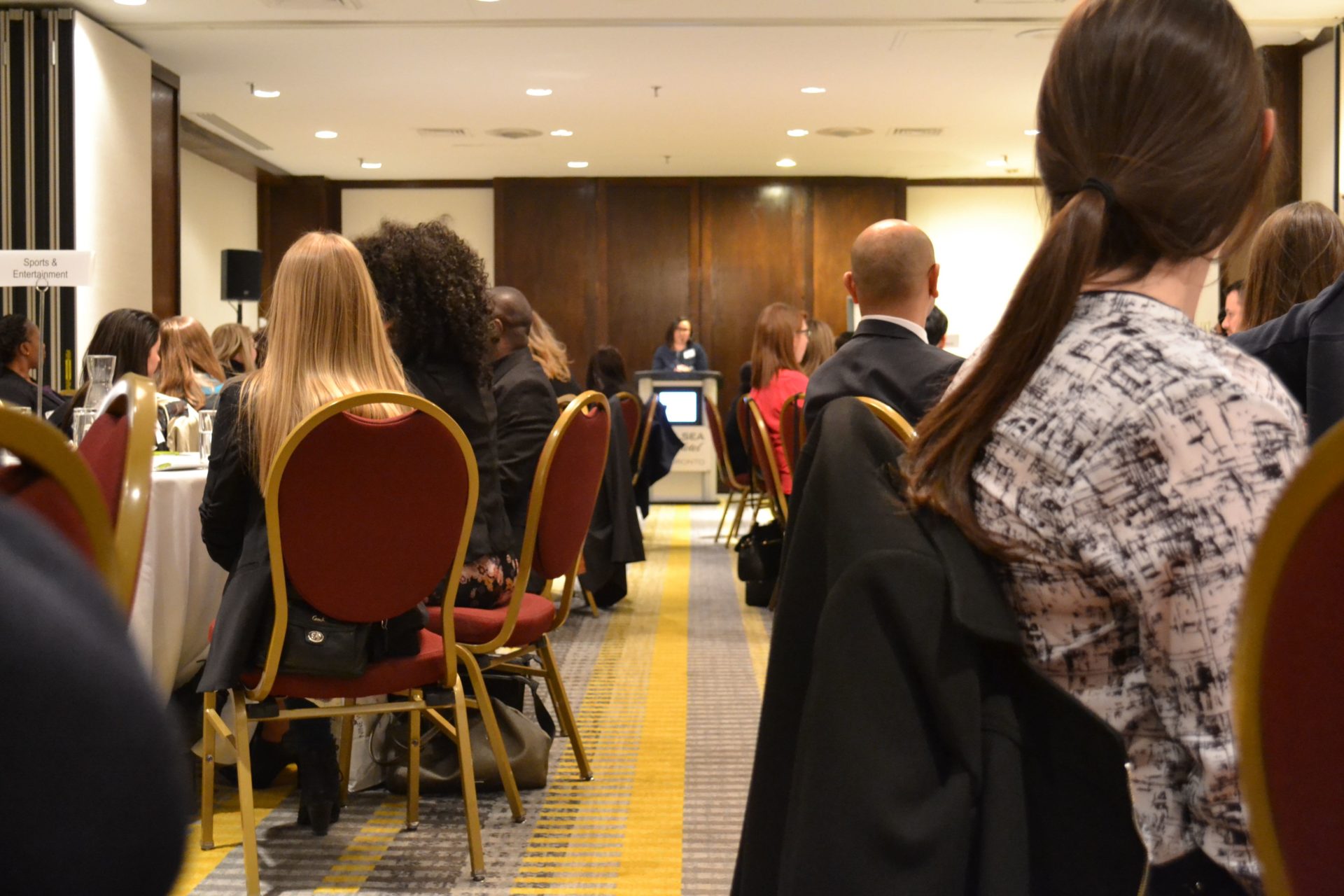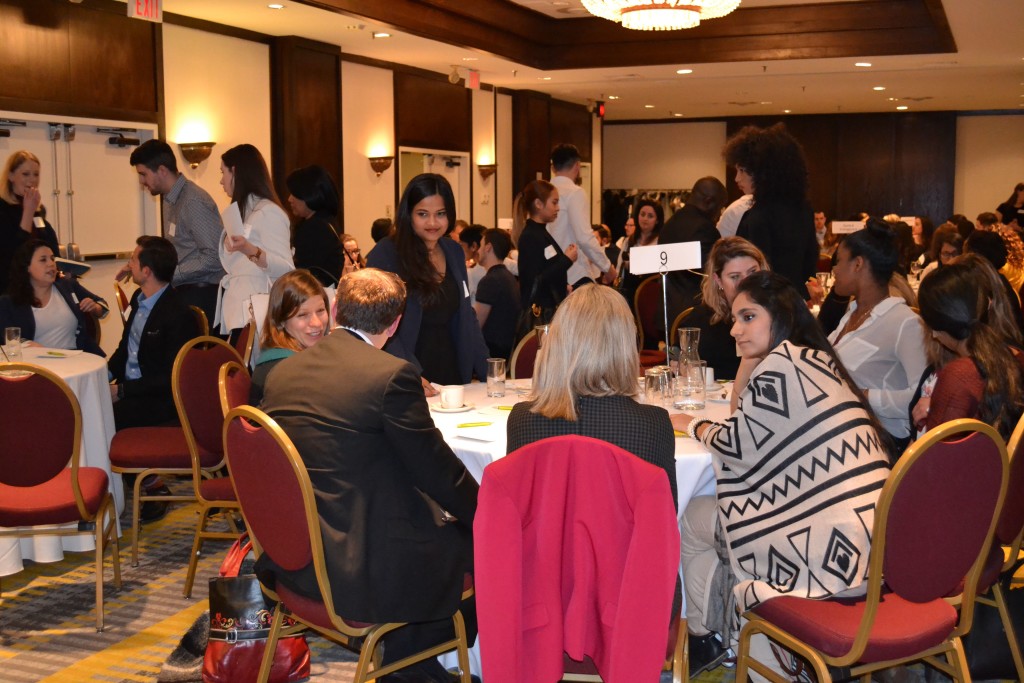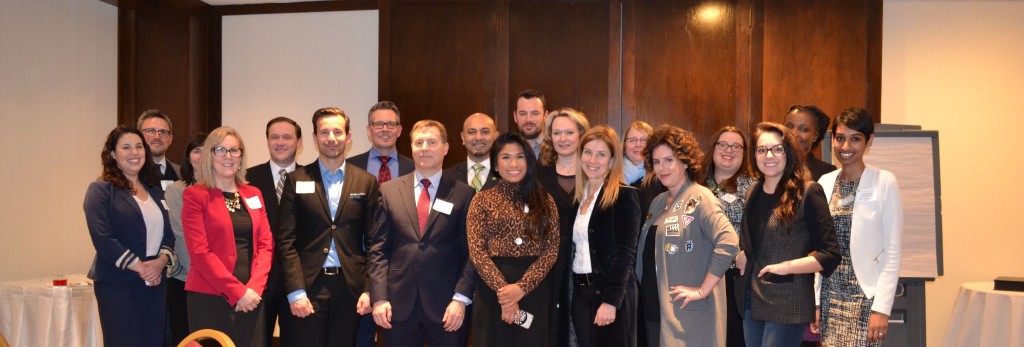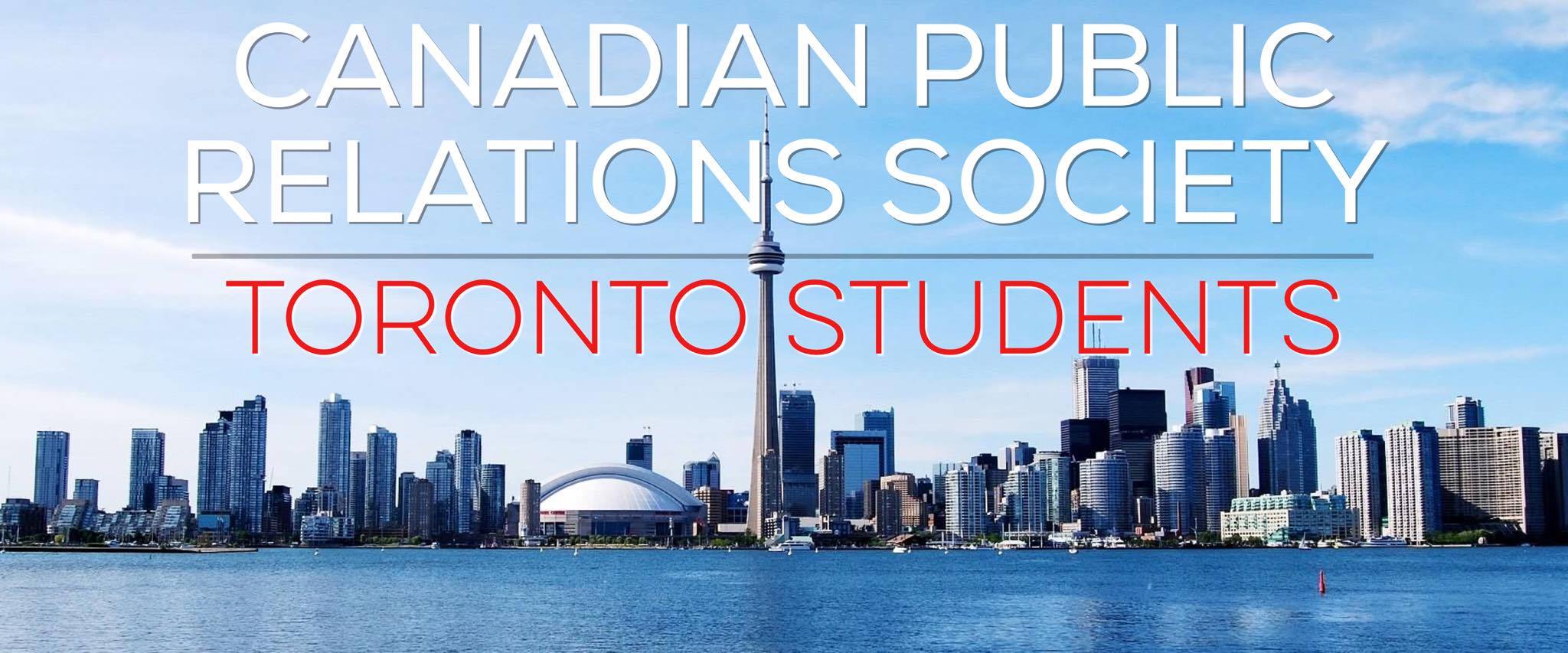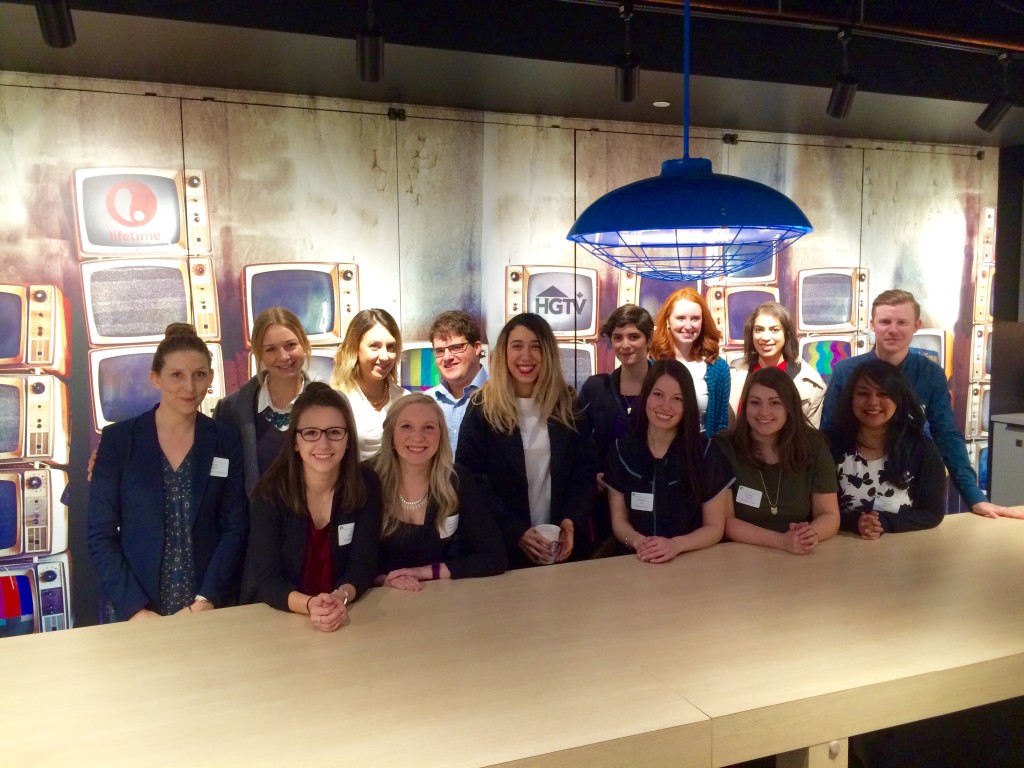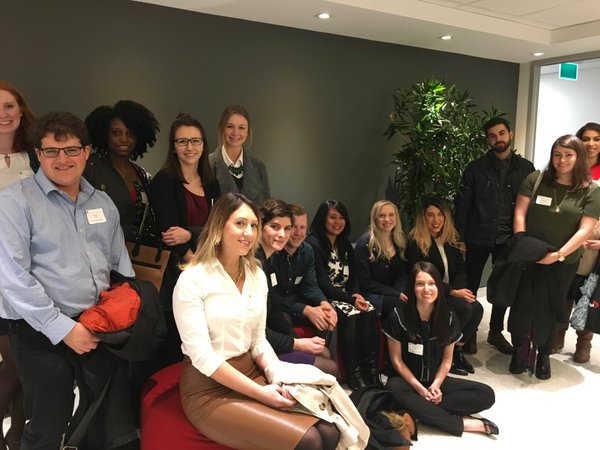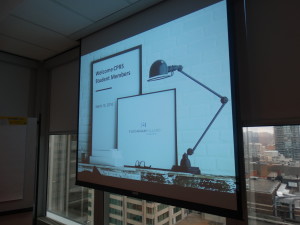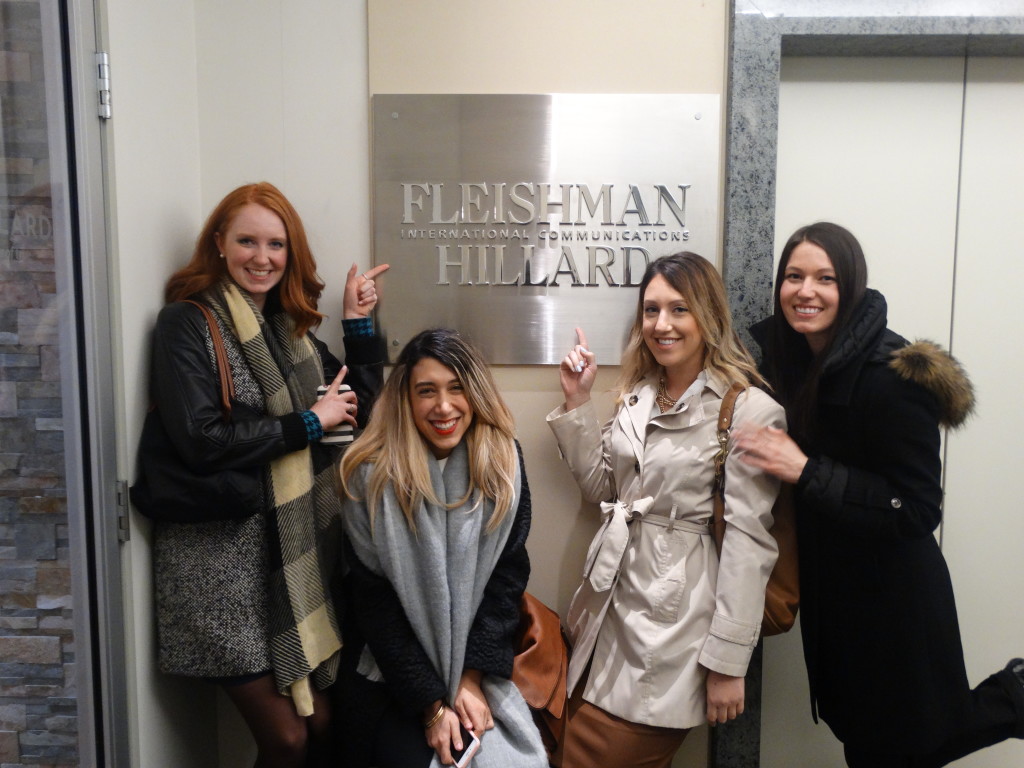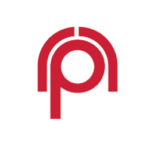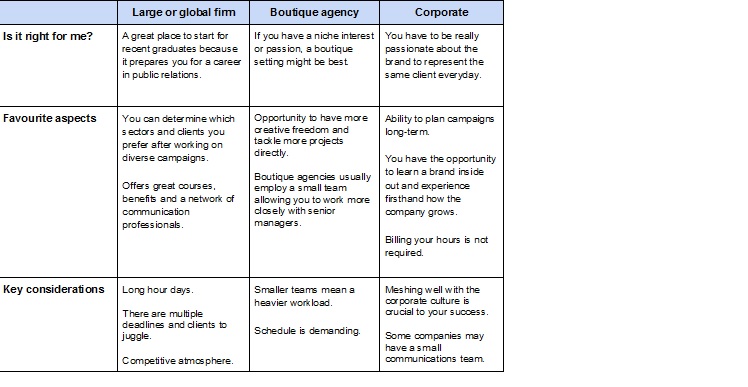On April 7, the CPRS Toronto Student Steering Committee (SSC) hosted their last event of the 2015/2016 school year, which took place at the Chelsea Hotel in downtown Toronto. A total of 72 public relations students from across the GTA attended the event, which allows small groups of students to intimately sit with professionals from a variety of public relations sectors.
Of course, the hot topic of the night for students was internships. They sought out advice on how to be exceptional during the internship hiring season and how to better their chances at landing their dream job. In additional to these useful tips, the participating professionals shared additional industry insights.
At the Finance table, Laurrell Mohammed, Corporate and Public Affairs Manager at TD Bank Group, stressed the importance of being able to “sell yourself” in an interview. David Rowney, Senior Manager of Canadian Banking Communications at Scotiabank, added that volunteering for your choice company is a good place to start.
Mike Van Soelen, Senior Principal from Navigator Ltd., seated at the Crisis Communications table, defined the process of building media relationships as “tricky” and explaining the importance of developing thick skin. While Vice President of NATIONAL PR, Jeff Roman, and NATIONAL PR Associate, Laura Poplak, advised that students should consider how to help the media you’re working with, and to offer them your support.
In the Government session Keerthana Kamalavasan, Senior Communications Advisor for the Office of the Mayor, recommended letting your coworkers know which projects you’re especially interested in and making yourself invaluable. Brendan Agnew-Iler, Account Director from Argyle Public Relationships, gave the students wise words to ponder whilst pursuing a career in PR: “If you’re not failing sometimes, you’re not trying hard enough.”
From left to right: Lauren Poplak, Brian Rosevear, Linda Andross, Tracy Ford, Dan Young, Jeff Roman, Mike Van Soelen, David Rowney, Laurrell Mohammed, Abby Albino, Brendan Agnew-Iler, Christine Faulhaber, Jeanette Jones, Sandra Gregory, Debra Goldblatt-Sadowski, Jennifer Wasley, Samantha Taus, Ogho Ikhalo and Keerthana Kamalavasan
The event showcased the range of positions in which public relations students could find themselves in their future. Other sectors included in the event were Consumer/Corporate, Global/Mid-size Agency, Non-Profit, Sports, Entertainment and Hospitality. Following the table discussions, attendees were free to mingle, network and try to glean final bits of crucial advice.
Not only was the night a fantastic chance to meet professionals, but it also provided a great opportunity to connect with other PR students entering the field. The SSC will be back in September for another great year of student-focused events.
It is a wonderful time to be in public relations and good luck to all the students this year heading into the industry!
—
Elyse Carney is a representative on the SSC currently attending Durham College.
On Tuesday, March 22, CPRS Toronto hosted a Mix ‘n Mingle event in celebration of Membership Month.
Both current and non-members gathered at the Hard Rock Café in Yonge-Dundas Square to learn more about CPRS Toronto and get inspired to become a better communicator with a captivating talk by special guest speaker, Jamie Mason Cohen.
Not only is Jamie a certified handwriting analyst, TED speaker, #1 Amazon best-selling author, he also worked behind the scenes for Saturday Night Live creator, Lorne Michaels.
In his fascinating presentation, Jamie revealed that at an early age, he discovered that he could express himself with words and that he had dreams to do it one day. From then on, Jamie developed a passion for learning and sharing how a person’s writing could reveal their hidden strengths and what makes them authentic, unique and powerful.
The audience was enthralled, as Jamie took them through an immersive and interactive writing task to uncover seven success traits of thought leaders including Oprah, Vera Wang, Richard Branson and Drake, and how handwriting analysis can be a fun and powerful way to instantly connect with anyone in less than five minutes.
“It was great to see so many turn out for another fun and informative CPRS Toronto PD event,” said Hilary Lawton, CPRS Toronto Membership Chair. For information on the next Professional Development event visit: https://www.cprstoronto.com/event-calendar/
The audio and visual recordings from Jamie’s session will be posted on the CPRS Toronto Facebook page.
Group A visits the Shaw Media, Paradigm PR and FleishmanHillard offices
Battling spring showers and Toronto traffic, we arrived unscathed and (fairly) dry at one of Toronto’s communications hot spots – Bloor Street. We were set to meet and explore three diverse and equally awesome communications and PR organizations: Shaw Media, Paradigm PR and FleishmanHillard.
We heard it all from the Shaw Media crew
First up on the list, Shaw Media. Right from the start the team had our group laughing and well caffeinated. We learned that a day in the life of a Shaw Media communicator is always varied. From organizing media tours for Chopped Canada’s Brad Smith to establishing their talent as subject matter experts to sending Supergirl capes across the country, Shaw Media communicators are constantly on the move. The team also gave some great advice for any PR and communications student looking for their first internship.
“Be resourceful and people will remember you.” – Jacqui, Senior Publicist for Global
“Volunteer inside of your organization to meet new people and expand your professional network.” – April, Publicity Coordinator for Food Network Canada
As for the golden rule of media relations, Greg, Associate Publicist, told students to be “100 per cent reliable, 100 per cent of the time.”
Paradigm PR gives us a glimpse into agency life
Next up on our route, Paradigm PR, a creative consumer PR agency. After introductions and Timbits we saw a number of client case studies. A favourite was definitely the media relations for Toy “R” Us’ ‘Chief Play Officer’ (every child’s dream job).
Johnathon, an intern turned account coordinator, went on to describe the variety of accounts he gets to work on, and the challenges he faced when transitioning from school to work. Anticipating what’s next in agency life can be difficult, as you’re moving top speed (almost) all the time. He credits attention to detail and meeting last minute requests as a sure way to build great relationships inside and outside your agency.
The Paradigm PR team also stressed the importance of company culture fit. Do your research, ask for informational interviews and find out as much as you can about the dynamic, clients and day-to-day rhythm of the agency. When you know the company culture you’ll know if it’s the right place for you to thrive.
Johnathon’s parting words of wisdom, “Be hungry.”
FleishmanHillard introduces us to the diversity of PR
FleishmanHillard greeted the group with a number of faces from across different practices and various levels. From associate consultant to senior partner, the presentation was full of interesting insight into FleishmanHillard and the communications industry itself. The unanimous decision from the FleishmanHillard team, agency is the right place to “earn your chops”, build your professional network and gain exposure to many different elements of the industry.
We saw sizzle reels from consumer brands such as Uncle Ben’s Beginners, which leveraged influencer Logan Guleff (MasterChef Junior winner) to get more kids in the kitchen. We also learned about their work with Bayer, a healthcare company, for a completely different take on communications. The campaign was creative in building community around “Hemophilia Champions.” Without direct mention of the brand in any of the communications, it was all about relationship building between stakeholders.
One of the best pieces of advice we learned from FleishmanHillard: take a shot; initiative goes a long way.
Until next year
Passport to PR was an amazing introduction into the very busy lives of PR and communications professionals. The candid conversations, exposures to real client work and bits of wisdoms from so many talented professionals were extremely valuable. If you get the chance to join a CPRS Passport to PR group, don’t hesitate. It’s a learning experience that you cannot find in any classroom at school.
To see more photos of the event and other locations click here: http://on.fb.me/1YRX3Pa
—
Written by Sarah Rogers, Centennial (Story Arts Centre) PR Post-Graduate Certificate Program student and representative on the Student Steering Committee
Informational interviews are less stressful than job interviews and offer practical career advice outside the classroom. Instead of reading a company’s “About” page I have found it more effective to reach out to someone I admire and pick their brain to accelerate my career search.
After researching professionals on LinkedIn, I came across Humber PR alumna and former TVO public relations manager Kathy Saliba. I was eager to meet with her and our second degree connection was kind enough to introduce us.
I learned a lot from our coffee chat and she offered relevant industry advice. Here are three reasons why I recommend going on informational interviews:
1) Gain insight from industry professionals.
It’s a great opportunity to ask specific questions about their personal experience, which you won’t get from an online search engine.
Kathy’s advice:
- Be open-minded. Opportunities can open up where you least expect them.
- Be a sponge. Absorb as much information as you can. Make the most of every experience.
- The learning process is never ending. Keep searching for opportunities to grow. Take advantage of the professional development and training courses offered online, at work or through professional organizations such as the CPRS Toronto Society.
2) Their knowledge of the industry can help you choose your path:
I was interested in learning about the differences between working in a large firm, boutique agency and corporate setting. Since Kathy had experience in all three she was able to shed some light on the subject.
Kathy suggested trying different work environments throughout your career to determine your preferred lifestyle and sector.
3) Helpful career tips
Kathy generously shared advice on how to succeed in job interviews:
- Read the company’s press releases and conduct a media audit to become more informed about the employer’s latest projects.
- In case of any questions about media relations, research media outlets tailored to the company’s clients or products. It’s a good habit to form a media list filled with specific traditional media, online bloggers and influencers.
- Research the person you are interviewing on LinkedIn to see if you have any shared connections or experiences you can bring up in the interview.
I encourage students and recent graduates to go on informational interviews if they want to build their confidence and learn more about their future. The more you go on and the more interview practice you obtain, the more prepared you will be to navigate your PR career.
—
By: Alessandra Manieri, Post-Graduate Public Relations Humber College
ACE Awards Judge, Lauren More, answers that question and shares her insights on the qualities of a gold winning submission
Taking the leap to judging the CPRS Toronto Ace Awards was a natural next step for Lauren More, VP Communications for Ford of Canada. Her six years of judging allowed her to see some of the freshest and most creative campaigns across industries. From helping run the CPRS Toronto mentoring program to ACE Awards judging, Lauren sees volunteering as her way of supporting the communications field.
Lauren shares her insight into creating an award-winning submission with this year’s crop of ACE award applicants:
The most popular categories
While ACE award judges typically judge on a variety of different categories, there are some categories that receive far more entries and are more competitive to place.
“It’s very competitive because it’s kind of the meat and potatoes of a lot of what we do as communicators,” said Lauren. “But the other area that has certainly just expanded exponentially is the social media category.”
The social media category, in particular, has some of the most creative submissions she’s seen.
The most standout campaigns
Lauren notes that often the most memorable and effective campaigns are the ones where “maybe it’s not the sexiest product or the sexiest point of view or the sexiest issue to grab awareness for”. Yet with a creative approach, these campaigns gained a ton of media attention.
While there are some topics that are naturally going to be of more interest to the media, the campaigns she’s enjoyed over the years are the ones where the brand really has to work at it to find something that would be meaningful to their audience.
The challenges to creativity
While it’s increasingly challenging, to come up with new ideas and new approaches, Lauren concedes sometimes there are periods where budgets have been a lot tighter.
“You have to do a lot more with a lot less,” she said, “And you’re still expected to deliver the same type of results – so I think that’s really pushed the level of creativity.”
The ability to sit back
It comes to no surprise that most communicators rarely have time to slow their everyday pace. Lauren explained the ACE Awards provide that perfect evening to do just that with your team and reflect back on your best work.
“We tend to in our jobs and our field to run pretty fast and run pretty hard.” she said, “And I think it’s really worthwhile to stop and take a breath now and then. To acknowledge the work and commitment we put in.”
There are certain things that separate excellence in our field. Lauren believes it’s important as a profession to both recognize and celebrate that.
The extra “oomph”
Key to winning best in show or taking home gold in any given category, Lauren emphasizes the consistency throughout the RACE formula steps. Some of the best submissions, in her opinion took the following measures:
- The research connects well with the analysis
- The analysis connects well to the communications tactics
- A solid evaluation of the results
If you research well you understand what you’re trying to achieve with a communications program. Those winning gold and best in show have that extra dose of creativity, she said.
Lauren also notes past campaigns resonated with people – their key audience – and they told a story, a really good story and “they have that little extra oomph to them.”
—
Written by: Jessica Chong, Account Coordinator, High Road Communicatons
